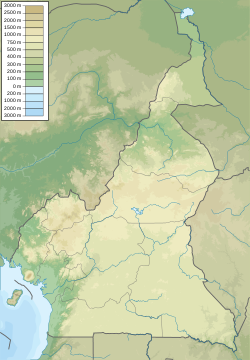| Logbadjeck Formation | |
|---|---|
| Stratigraphic range: Late Turonian-early Campanian ~ | |
| Type | Geological formation |
| Underlies | Logbaba Formation |
| Overlies | Mundeck Formation |
| Lithology | |
| Primary | Shale, limestone, marl |
| Other | Siltstone, sandstone |
| Location | |
| Coordinates | 3°54′N10°00′E / 3.9°N 10.0°E |
| Approximate paleocoordinates | 8°48′S41°24′W / 8.8°S 41.4°W |
| Region | Southwest Region |
| Country | Cameroon |
| Extent | Douala Basin |
The Logbadjeck Formation, also known as the Mungo River Formation, is a Late Cretaceous geologic formation in Cameroon. It is Turonian to Campanian in age, and represents a marine depositional environment. [1] Pterosaur fossils have been recovered from the formation. [2]
